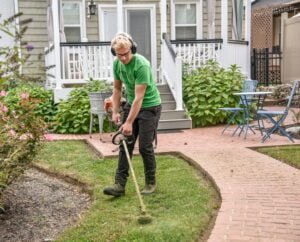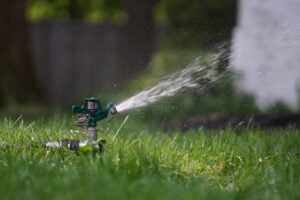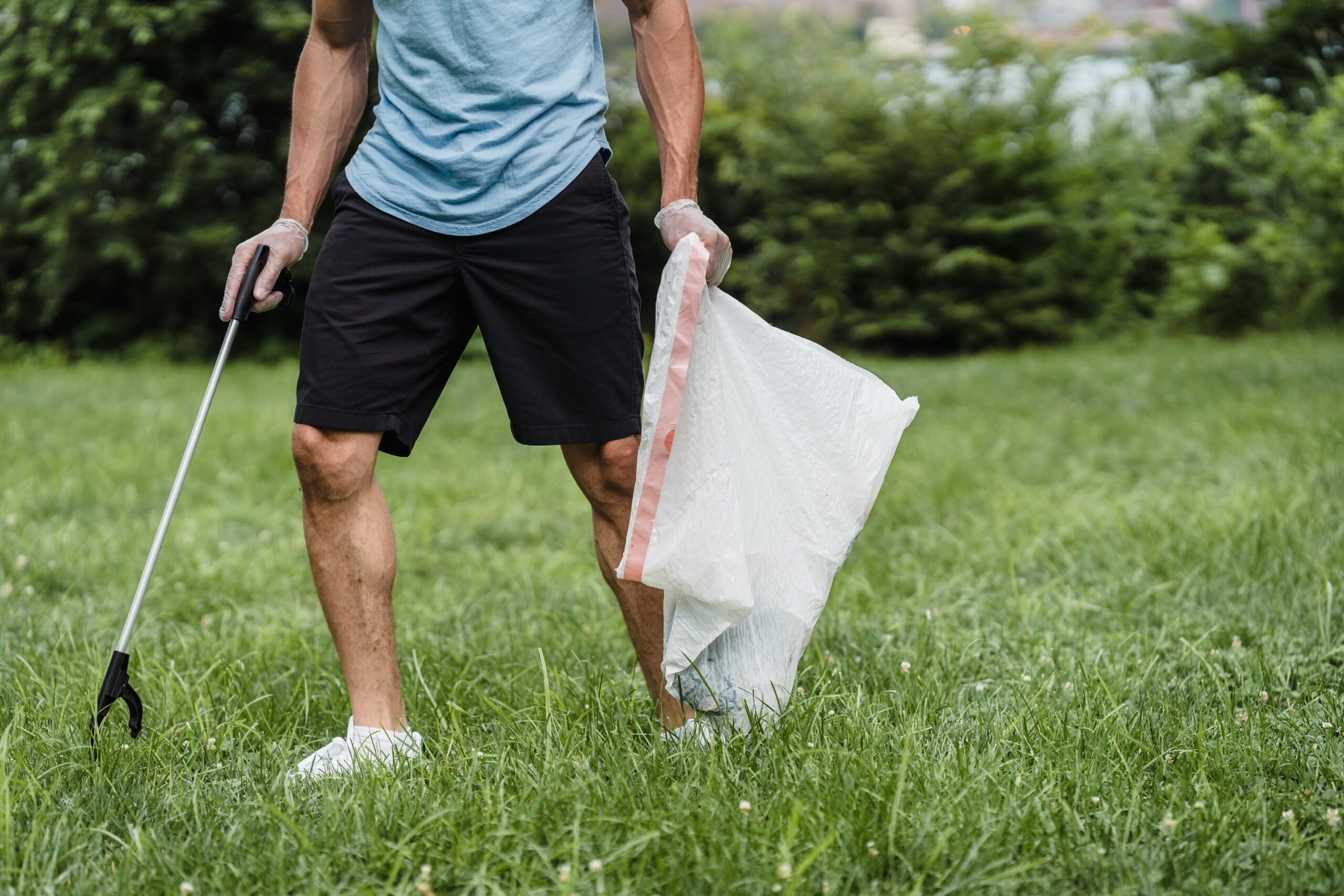Lawn Care
How will you keep your ideal outdoor space looking its best once you’ve developed it and picked the correct soil and grass for the area? To avoid having a boring, weed-infested lawn again, follow these simple lawn care and management practices and maintain a regular maintenance schedule. Here discuss basic lawn care and management practices.
Lawn Care And Management:
Remove weeds, thatch, and moss
These nasties can stifle growth by obstructing the flow of oxygen and nutrients to the roots.
Weeds
These can appear anywhere in the garden because there are so many ways they can be introduced, such as via birds flying overhead, pets and other animals roaming the grass, or even on your clothing and footwear. Lawn weeds can appear as seed heads or flowers, and there are many different forms that can be found in lawns.
Pulling out the entire weed, roots and all, is the simplest method. This can be done by hand or with a tool, but if there are a lot of weeds, spray them directly with a low-toxicity herbicide.
Thatch
This is a layer of organic materials made up of dead leaves, grass, and root stems that can form between the leaves and the soil. The buildup causes an obstruction, preventing vital moisture and nutrients from reaching the roots through the soil. The ground will feel spongy, and the absence of nutrients will leave dull, lifeless spots on the grass, making these areas easier to spot.
Scarification, which is the process of raking and removing mulch from the lawn, is the greatest technique for eradicating thatch. There are a multitude of instruments available to help with this procedure, including a lawn scarifier.
Moss
Mosses are non-flowering plants that can wreak havoc on your lawn. They flourish in regions with a lot of wetness, shade, and poor turf.
The level of moss will increase if left uncovered or untreated, decreasing the grasses’ ability to thrive. The following are the initial circumstances that allow it to develop:
- Shade
- Soil containing clay
- Drainage issues
- Thatch in large numbers
- Drought
The cause of the moss must be recognized and reduced before the moss may be removed. It may then be fed and scarified, and it can be watched and maintained.
Improve drainage
Poor drainage causes lawns to become wet for hours, if not days. If drainage is not corrected, this might lead to other problems for your lawn’s health. The soil’s ability to absorb water and the garden’s design are the two most typical causes of water buildup.
Soil permeability
Water absorption can be hampered by high quantities of clay in the soil, thick patches of thatch, soil compaction, and layers of roots. Aeration can improve the flow of water and air to lessen surface buildup depending on the severity of the problem.
Altering the type of your soil, on the other hand, can help you achieve the desired drainage levels. This can be accomplished by either planting plants that are appropriate for the existing soil type or progressively amending the soil with organic resources.
Garden topography
With a shallow, level slope, the form of your garden should naturally push water away from the house. Water might pool in one location during any dip, causing harm to the grass and roots. It is critical that you avoid water logging in your garden.
Installing gutters and drains to funnel excess rain away from the grass, planting a variety of moist plants that thrive in water, or reshaping the area and modifying the gradient are all efficient strategies to increase drainage when this happens.
Aerate
This technique permits more air and water to reach the grass’s root zone, which is critical for the grass to get the nutrients it needs to flourish. It’s a good approach to deal with drought-stricken or water-logged lawns.
Aeration involves poking small holes in the soil at specific intervals and depths with a garden fork or specifically designed instruments and machines – even aerating shoes are available!
Over-seeding
By covering the entire area with massive amounts of seed combined with fertilizer, over-seeding rejuvenates old and worn-out lawns. This improves the color and reduces the possibility of weed and moss incursions while filling in damaged and thinning areas.
The lawn must be scarified or aerated, mowed, and well-watered before the seeds may be applied. Spreaders can be purchased to aid in the equal spreading of seeds.
The grass should be kept moist after seeding to aid germination, and a top dressing should be applied to preserve the seeds and offer nutrients. This can be done once a year to keep your lawn healthy.
Mowing and edging
It’s advisable to simply remove one-third of the grass’s length when mowing your lawn. The time of year and current weather conditions will determine how often you need to mow.
The amount of mowing necessary when the weather is colder, especially during frost, is reduced. With the warmer weather, mowing gets more frequent as the grass begins to grow more quickly.
Avoid mowing when the soil or grass is damp, since this may damage the lawn and impede future healthy growth. If you use a roller mower, you’ll need to change the direction of mowing every time.
Feeding and watering
Most gardening supply stores have a variety of grass feeds and fertilizers. The type required will be determined by the soil and weather conditions in your area. The majority of these will come with application directions, so it’s best to stick to those.
In general, it’s best to treat your lawn twice a year, once in the spring with a nitrogen-rich lawn feed and once in the autumn with a phosphate and potash-rich fertilizer.
All lawns require watering in addition to feeding. If a lawn isn’t given enough water, it will turn brown and lose its spring, causing the grass to stay flat when stepped on.
Watering amounts and frequency will be determined by the type of soil and weather conditions in your area. You don’t want to over-water, either. To achieve the best results, water the lawn first thing in the morning in cooler temperatures.
Top dressing
This is used to build up and improve the quality of existing soil, increasing drought resistance and drainage while smoothing out any flaws.
The soil type for your garden will need to be evaluated, just like any other maintenance, in order to have the right materials and consistency when doing your top dressing.
Regularly inspecting and maintaining your lawn, as well as removing any undesired surface waste such as dead leaves and twigs, and cutting down any areas that cause too much shade, can keep your grass looking lush and healthy. These are the basic lawn care and management practices you can adopt in your lawns. This is all about lawn care and management practices.
